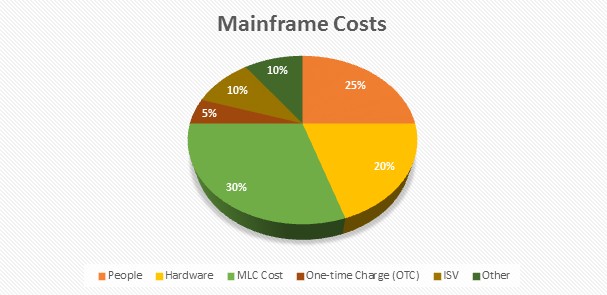Yes, mainframes are now on autopilot, not unlike Tesla automobiles! While everyone is chasing the next big, disruptive unicorn like Uber or Airbnb, bright mainframe engineers are quietly disrupting the industry with new customer-driven innovations. If you are into capacity planning, then you would be thrilled to learn about these latest trends and innovations in the mainframe world.
Curiously, most non-mainframe technology professionals are unaware of innovation opportunities on the mainframe side. Many think mainframes are age-old dinosaurs that occupy entire rooms, use card punch input, and require bits-and-bytes programming. Nothing could be farther from the truth – things have changed a lot over the years.
Mainframe systems today are now the size of your refrigerator, and run the most critical computing work of our world’s top banks, insurance companies, healthcare organizations, utilities, government, military, and a multitude of other public and private enterprises. Mainframes are a multi-billion-dollar industry, and innovation has achieved significant positive impact in the industry.
The Key Challenge
Many surveys have revealed that one of the biggest challenges facing companies with mainframes today is the increasing cost. Mainframe costs include several components, but the largest portion involves IBM monthly license charge [MLC] software costs (See Figure 1). What’s more, MLC software costs increase 4-7% annually. This would give any CFO a nightmare!

Figure 1 Mainframe costs
For decades, mainframe customers have manually managed mainframe workload capping strategies, constantly shifting workload allocations to manage costs and meet business demand. But these techniques are manual, risky and error-prone, and often don’t provide desired results.
Mainframe customers are often charged for their mainframe software based on peak MSU usage through the MLC. To determine the MLC, the mainframe operating system generates monthly reports that determine the customer’s system usage (in MSUs) during every hour of the previous month using a rolling average (e.g., a 4-hour rolling average) recorded by each LPAR or a capacity group for the customer. The hourly usage metrics are then aggregated together to derive the total monthly, hourly peak utilization for the customer, which is used to calculate the bill for the customer.
To control costs, system administrators might assign each LPAR or capacity group a consumption limit (Defined Capacity or Group Capacity Limit), meaning that the LPAR or group cannot use more MSUs than allotted in its respective consumption limit. But this may result in some work not receiving the CPU resources it needs, in effect slowing down the execution and completion of that work.
This may have very undesirable effects on important workloads. Since meeting performance objectives of high importance work is deemed a necessary part of shifting resources, system administrators tend to raise capacity limits to meet the demand and avoid outage to their workloads. But raising the capacity limit even for as little as an hour can increase MLC costs substantially.
Today’s Innovation
This challenge has caught attention of some of the bright minds in the industry. They thought if automobiles can be on autopilot then why can’t we put mainframes on autopilot? If you ever drove a Tesla automobile that has autopilot software, then you would know firsthand the simplicity of driving. You would provide all necessary input to the autopilot software and the automobile’s software does the rest.
Similarly, the bright engineers in the mainframe industry developed software that does exactly what the customers wanted i.e., to put mainframes on autopilot. You provide all the necessary inputs to this software, for example, an upper limit on the capacity that combined systems should use, which systems to be monitored, which system to be favored over others, whether to use the WLM importance data, etc. Once you feed all the necessary input to the software, you can then go relax while software takes control of your mainframe!
The result is a dynamic solution that reduces MLC costs while mitigating risk to critical business workloads. Hence mainframes are now on autopilot!
Hemanth Rama, a millennial mainframer, is a senior software engineer at BMC Software. Hemanth has 13+ years of IT experience and he holds 3 patents. Hemanth is recipient of IBM z Champion award 2018. Hemanth writes regularly for many popular IT websites and also on his personal blog. He passionately speaks about mainframe technologies at various conferences, symposiums and user groups. Hemanth writes regularly for many popular IT websites and also on his personal blog.



The mainframe sector s shortage of young blood is no secret. Hemanth Rama is bucking the trend. At 35, he s a positive child in a sector stereotypically populated by aging be honest guys, those knees hurt a bit, right? COBOL programmers.